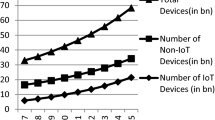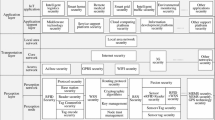Abstract
WiMax (Worldwide Interoperability for Microwave Access, IEEE 802.16) is a standard-based wireless technology, which uses Privacy Key Management (PKM) protocol to provide authentication and key management. Three versions of PKM protocol have been released and the third one (PKMv3) strengthens the security by enhancing the message management. In this paper, a formal analysis of PKMv3 protocol is presented. Both the Subscriber Station (SS) and the Base Station (BS) are modeled as processes in our framework. Besides, we introduce an intruder model where the intruder has capabilities of overhearing, intercepting and faking messages. Discrete time describes the lifetime of the Authorization Key (AK) and the Transmission Encryption Key (TEK). Moreover, the PKMv3 model is constructed through the discrete-time PROMELA (DT-PROMELA) language and the tool DT-Spin implements the PKMv3 model with lifetime. Finally, we simulate communications between SS and BS and verify some properties, such as liveness, succession and message consistency, which are extracted from the PKMv3 protocol and specified using Linear Temporal Logic (LTL) formulae and assertions. The simulation and verification results demonstrate that the attacks may exist in our model of the PKMv3 protocol.





Similar content being viewed by others
References
Bosnacki D, Dams D (1998) Discrete-time Promela and spin. In: Formal techniques in real-time and fault-tolerant systems, 5th international symposium, FTRTFT’98, Lyngby, Denmark, September 14–18, 1998, proceedings, pp 307–310. https://doi.org/10.1007/BFb0055359
Bosnacki D, Dams D (1998) Discrete-time Promela and spin. In: Formal techniques in real-time and fault-tolerant systems, 5th international symposium, FTRTFT’98, Lyngby, Denmark, September 14–18, 1998, proceedings, pp 307–310. https://doi.org/10.1007/BFb0055359
Chen Z, Gu Y, Huang Z, Zheng J, Liu C, Liu Z (2015) Model checking aircraft controller software: a case study. Softw Pract Exper 45(7):989–1017. https://doi.org/10.1002/spe.2242
Chen Z, Zhang D, Ma Y (2015) Modeling and analyzing the convergence property of the BGP routing protocol in SPIN. Telecommun Syst 58(3):205–217. https://doi.org/10.1007/s11235-014-9870-y
Committee I.L.S. et al. (2011) Standard for local and metropolitan area networks-Part 16: air interface for broadband wireless access systems-amendment 3: advanced air interface. IEEE Std 16m:802
Dabaghchian M, Azgomi MA (2015) Model checking the observational determinism security property using PROMELA and SPIN. Form Asp Comput 27(5-6):789–804. https://doi.org/10.1007/s00165-014-0331-x
Dabaghchian M, Azgomi MA (2015) Model checking the observational determinism security property using PROMELA and SPIN. Form Asp Comput 27(5-6):789–804. https://doi.org/10.1007/s00165-014-0331-x
El-Amin AM, El-agooz S, Shehata AEDR, Amer EAE (2013) Design, verification and implementation of enhanced PKM WiMAX authentication protocol. International Journal of Computer Science and Telecommunications 4:41–46
Ferreira JF, Gherghina C, He G, Qin S, Chin WN (2014) Automated verification of the freertos scheduler in hip/sleek. Int J Softw Tools Technol Transfer 16(4):381–397
Gherghina C, David C, Qin S, Chin WN (2014) Expressive program verification via structured specifications. Int J Softw Tools Technol Transfer 16(4):363–380
Kahya N, Ghoualmi N, Lafourcade P (2012) Formal analysis of PKM using scyther tool. In: International conference on information technology and e-services (ICITes), 2012. IEEE, pp 1–6
Kreiker J, Tarlecki A, Vardi MY, Wilhelm R (2011) Modeling, analysis, and verification - the formal methods manifesto 2010 (dagstuhl perspectives workshop 10482). Dagstuhl Manifestos 1(1):21–40. https://doi.org/10.4230/DagMan.1.1.21
Papapanagiotou I, Toumpakaris D, Lee J, Devetsikiotis M (2009) A survey on next generation mobile WiMAX networks: objectives, features and technical challenges. IEEE Commun Surv Tutorials 11(4):3–18. https://doi.org/10.1109/SURV.2009.090402
Pathak S, Pulina L, Tacchella A (2016) Evaluating probabilistic model checking tools for verification of robot control policies. AI Commun 29(2):287–299. https://doi.org/10.3233/AIC-150689
Process analysis toolkit spin home page. http://spinroot.com/spin/whatispin.html
Rai AK, Mishra S, Tripathi PN (2011) An improved secure authentication protocol for wiMAX with formal verification. In: Advances in computing and communications - first international conference, ACC 2011, Kochi, India, July 22–24, 2011. Proceedings, pp 407–416. https://doi.org/10.1007/978-3-642-22714-1_42
Raju KVK, Kumari VV, Varma NS, Raju KVSVN (2010) Formal verification of IEEE802.16m PKMv3 protocol using CasperFDR. In: Information and communication technologies - international conference, ICT 2010, Kochi, Kerala, India, September 7–9, 2010. Proceedings, pp 590–595. https://doi.org/10.1007/978-3-642-15766-0_101
Sadeghi MMG, Ali BM, Ma M, Manan JA (2014) Scalable and efficient key management for Mobile WiMAX networks. Int J Commun Syst 27(10):2166–2189. https://doi.org/10.1002/dac.2466
Saha I, Roy S (2006) A finite state modeling of AFDX frame management using spin. In: Formal methods: applications and technology, 11th international workshop, FMICS 2006 and 5th international workshop PDMC 2006, Bonn, Germany, August 26–27, and August 31, 2006, revised selected papers, pp 227–243. https://doi.org/10.1007/978-3-540-70952-7_15
Saha I, Roy S (2007) A finite state analysis of time-triggered CAN (TTCAN) protocol using spin. In: 2007 international conference on computing: theory and applications (ICCTA 2007), 5–7 March 2007, Kolkata, India, pp 77–81. https://doi.org/10.1109/ICCTA.2007.4
Taha AM, Abdel-Hamid AT, Tahar S (2009) Formal verification of IEEE 802.16 security sublayer using scyther tool. IEEE, pp 1–5
Trivedi DH, Patil MS (2011) Security in wimax using privacy and key management protocol. In: Proceedings of the ICWET ’11 international conference & workshop on emerging trends in technology, Mumbai, Maharashtra, India, February 25–26, 2011, p 1372. https://doi.org/10.1145/1980022.1980379
Xu S, Huang CT, Matthews MM (2008) Modeling and analysis of IEEE 802.16 PKM protocols using CasperFDR. In: IEEE international symposium on wireless communication systems. 2008. ISWCS ’08. IEEE, pp 653–657
Yang F (2011) Comparative analysis on TEK exchange between PKMv1 and PKMV2 for WiMAX. In: 7th international conference on wireless communications, networking and mobile computing (WiCOM), 2011, pp 1–4
You Z, Xie X, Zheng W (2010) Verification and research of a wimax authentication protocol based on SSM
Zhu X, Xu Y, Guo J, Wu X, Zhu H, Miao W (2015) Formal verification of PKMv3 protocol using DT-spin. In: 2015 international symposium on theoretical aspects of software engineering, TASE 2015, Nanjing, China, September 12–14, 2015, pp 71–78. https://doi.org/10.1109/TASE.2015.20
Acknowledgements
This work was supported by China HGJ Project (No. 2017ZX01038102-002), National Natural Science Foundation of China (61532019) and Shanghai Collaborative Innovation Center of Trustworthy Software for Internet of Things (No. ZF1213). The first author also gratefully acknowledges the financial support from China Scholarship Council (CSC, File No. 201606140137).
Author information
Authors and Affiliations
Corresponding author
Rights and permissions
About this article
Cite this article
Zhu, X., Xu, Y., Li, X. et al. Formal Analysis of the PKMv3 Protocol. Mobile Netw Appl 23, 44–56 (2018). https://doi.org/10.1007/s11036-017-0903-0
Published:
Issue Date:
DOI: https://doi.org/10.1007/s11036-017-0903-0




